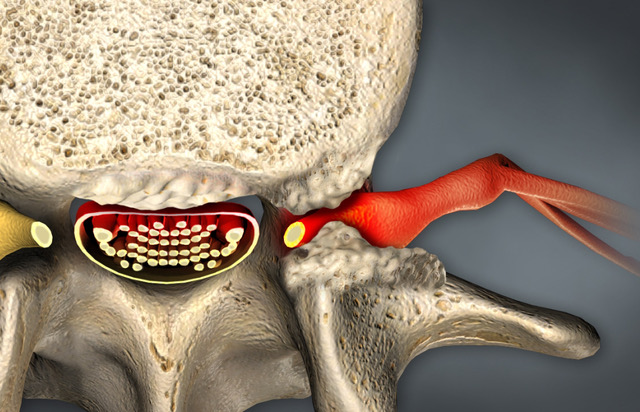Foraminal Stenosis (Neural Foraminal Narrowing)
Neural foraminal narrowing, also known as foraminal stenosis, is a condition that results when the spinal nerve roots are compressed. These nerve roots run through small openings at every level of the spinal column, called foramina. When these foramina become narrowed (stenotic) they can compress the nerve roots causing symptoms such as pain, tingling, numbness and or weakness along the areas served by the nerve.
Foraminal narrowing usually affects a single nerve root on one side of the body, although some patients may experience bilateral foraminal narrowing (bilateral neural stenosis), caused by nerve compression on both sides of the spine.

Foraminal Stenosis Surgery
Neural Foraminal Stenosis is a common condition treated at the Bonati Spine Institute. The Bonati Spine Procedures utilize patented instruments and techniques to treat chronic pain caused by foramina narrowing. They can quickly and efficiently relieve the pain caused by the pressure on the nerves by enlarging the foraminal canals. These procedures are performed on an outpatient basis, under conscious IV sedation with local anesthesia. Patients often report immediate relief as the pressure is removed. The patient is able to walk out shortly after the procedures and return to normal, pain-free life. Many of our patients return to work within days of their procedure.
Causes
Foraminal stenosis causes are often caused by the natural aging process, however, there are a number of conditions that can lead to foraminal narrowing, including:
- Bone spurs
- Herniated disc
- Bulging disc
- Degenerative disc disease
- Spondylolisthesis
- Spinal arthritis
- Spinal injuries
- Enlargement of the facet joints
Symptoms
Foraminal stenosis may develop over time, which means the pain may develop over years and not be constant. Some foraminal stenosis symptoms to be mindful of:
- Pain in the upper back, neck or shoulders
- Numbness, tingling or loss of sensation
- Weakness in raising your shoulder or extending your arm
- Muscle spasms
- A feeling of “pins and needles”
Many of these symptoms are radicular, which means the pain will often radiate along the path of the affected nerve. For example, if you are suffering from cervical spinal stenosis, you may experience pain in the neck, shoulders and arms.
Diagnosis
In order to diagnose foraminal stenosis, you will need to schedule a consultation and provide a complete medical history. A physical examination will allow a doctor to look for any limitations you have while completing specific movements, loss of reflexes and pain.Imaging tests, such as an MRI, CT scan or x-ray can also help confirm the diagnosis.
Treatment options
Foraminal stenosis can be very frustrating due to the pain and discomfort that it may cause when getting into certain positions or engaging in certain activities. Unlike many other back or neck conditions, most conservative foraminal stenosis treatment options, such as pain medications, may not be of much benefit. Some may choose to modify their current lifestyle, but others may opt for spine surgery in order to get treatment for foraminal stenosis.
The Bonati Spine Institute encourages patients with foraminal narrowing to contact us to request a no-obligation MRI review or discuss your conditions with our medical professionals. Find out why The Bonati Spine Procedures are considered to be among the world’s best solutions when it comes to advanced spine surgery. Your pain from foraminal stenosis can become a thing of the past.
